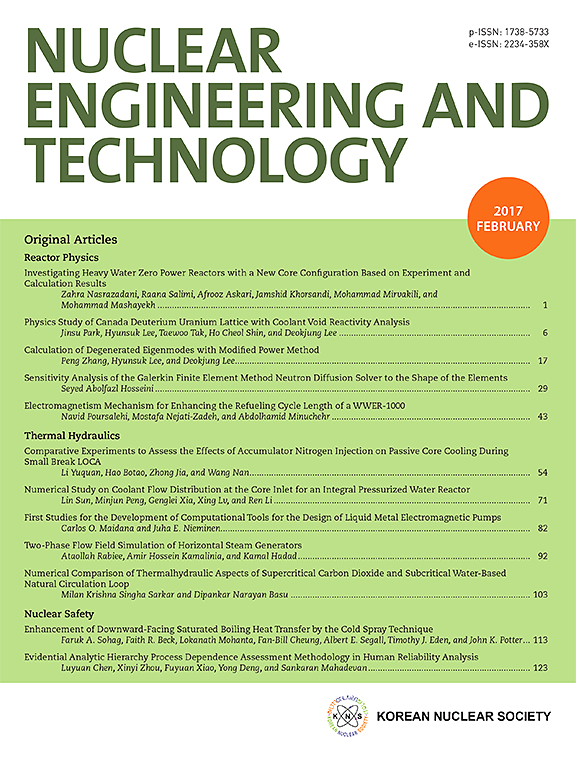用于核废料处理的vlc增强型自主轨道车辆
IF 2.6
3区 工程技术
Q1 NUCLEAR SCIENCE & TECHNOLOGY
引用次数: 0
摘要
本文研究了用于核废料处理的自动轨道车辆(ARVs)的可见光通信(VLC)的潜力。该研究的重点是设计一种配备VLC技术的ARV系统,以确保在危险环境中(如深层地质储存库)安全可靠的通信。初步测试表明,VLC可以有效地保持ARV组件之间长达30米的通信距离,即使在受限角度下工作。在本研究中,测试了60°和75°的角度,对应于测试路线的曲线角度。使用4-QAM调制,可以在大约5.5 m的距离上以75°的角度进行测量。该系统在解决关键挑战方面显示出了希望,例如高辐射水平和密闭空间,传统的基于rf的通信系统可能在这些地方失效。结果表明,VLC可显著提高核废料处置ARV操作的安全性和效率,在鲁棒性和可靠性方面具有优势。未来的工作将侧重于将VLC更深入地集成到ARV控制系统中,进一步在现实环境中进行测试,并探索其在核废料管理中的应用。本文章由计算机程序翻译,如有差异,请以英文原文为准。
VLC-enhanced autonomous rail vehicle for nuclear waste disposal
This paper investigates the potential of visible light communication (VLC) for autonomous railway vehicles (ARVs) engaged in nuclear waste disposal. The research focuses on designing an ARV system equipped with VLC technology to ensure safe, reliable communication in hazardous environments, such as deep geological repositories. Initial testing demonstrated that VLC can effectively maintain communication between ARV components over distances of up to 30 m, even when operating at limiting angles. In this study, angles of 60° and 75° were tested, corresponding to the angles of the curves of the tested route. With 4-QAM modulation it was possible to measure at a distance of approximately 5.5 m with an angle of 75°. The system has shown promise in addressing key challenges, such as high radiation levels and confined spaces, where traditional RF-based communication systems may fail. The results indicate that VLC could significantly improve the safety and efficiency of ARV operations in nuclear waste disposal, offering advantages in terms of robustness and reliability. Future work will focus on integrating VLC more deeply into ARV control systems, further testing in real-world environments, and exploring its application nuclear waste management.
求助全文
通过发布文献求助,成功后即可免费获取论文全文。
去求助
来源期刊

Nuclear Engineering and Technology
工程技术-核科学技术
CiteScore
4.80
自引率
7.40%
发文量
431
审稿时长
3.5 months
期刊介绍:
Nuclear Engineering and Technology (NET), an international journal of the Korean Nuclear Society (KNS), publishes peer-reviewed papers on original research, ideas and developments in all areas of the field of nuclear science and technology. NET bimonthly publishes original articles, reviews, and technical notes. The journal is listed in the Science Citation Index Expanded (SCIE) of Thomson Reuters.
NET covers all fields for peaceful utilization of nuclear energy and radiation as follows:
1) Reactor Physics
2) Thermal Hydraulics
3) Nuclear Safety
4) Nuclear I&C
5) Nuclear Physics, Fusion, and Laser Technology
6) Nuclear Fuel Cycle and Radioactive Waste Management
7) Nuclear Fuel and Reactor Materials
8) Radiation Application
9) Radiation Protection
10) Nuclear Structural Analysis and Plant Management & Maintenance
11) Nuclear Policy, Economics, and Human Resource Development
 求助内容:
求助内容: 应助结果提醒方式:
应助结果提醒方式:


